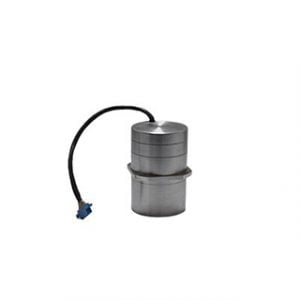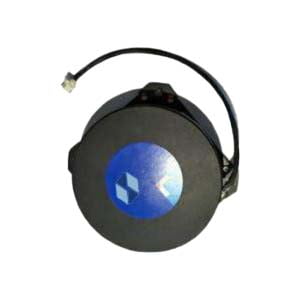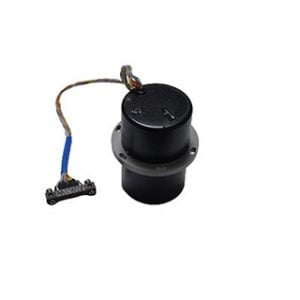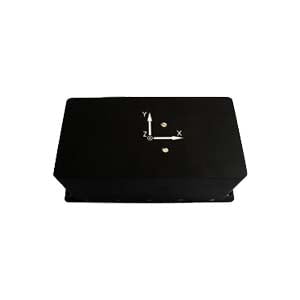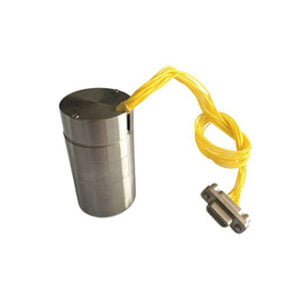Suspend the gyro frame assembly with high-density liquid. The Archimedes principle is used to make the buoyancy of the floating liquid completely overcome gravity, and to achieve neutral suspension to unload its supporting bearings. This kind of gyro is called a full liquid floating gyroscope, referred to as fluid floated gyroscope.
Liquid floating gyroscope is a gyro that is widely used in inertial navigation system at present. It belongs to frame type gyroscope. Its high-speed rotating gyro rotor is driven by gyro motor. The main feature of the liquid floating gyroscope is that the rotor is sealed in a floating ball (or float) filled with inert gas, and the floating ball is suspended in fluorine oil. Through precise static balance and temperature control, the buoyancy of the floating ball It is fully balanced with the gravity of this component, so as to ensure that the friction torque on the jewel bearing for positioning the float is reduced to a very small degree.
Liquid float gyroscopes are usually classified according to different structures, working principles, functions, etc.The common classifications are as follows.
1) According to the number of precession degrees of freedom of the spin axis, it is divided into single freedom liquid floating gyro and double freedom liquid floating gyro.
2) According to the suspension support used is single or multiple divided into: fluid floated gyroscope, dual floated gyroscope (using a dynamic pressure air float rotor, liquid float frame), triple floated gyroscope (triple-floated) gyroscope)(using dynamic pressure air float rotor, liquid float frame, maglev centering).
Single degree of freedom liquid floating gyroscope
The main functions and characteristics of each component
1) gyro motor: provides gyro moment of momentum, usually using 3-phase or 2-phase hysteresis synchronous motor, can also use permanent magnet motor, etc., generally in the form of internal stator and external rotor. The bearings can be either ball bearings or dynamic pressure air float bearings.
2) Sensor assembly: the mechanical Angle of the float assembly relative to the housing is converted into an electrical signal, usually with moving coil and microsynchronizer Angle sensors.
3) Torque component: The use of electromagnetic principle to generate torque, common permanent magnet torque and electromagnetic torque.
4) Float assembly (i.e. gyroscope assembly) : usually cylindrical, also has a spindle shape (i.e.gyroscope room), which is equipped with a motor, pre-vacuum and filled with a certain "maximum force of high-purity helium or hydrogen, the external filled with suspended liquid, both ends of the float trim mechanism, the middle of the pivot (i.e.precession shaft).
5) Output bearing: consists of a pair of pivots mounted on the float assembly and a pair of gemstone bearings concentrically mounted on the housing (or end cover). Pivot and gemstone bearings are made of special materials that require wear resistance, high hardness, low coefficient of friction and impact resistance. Magnetic suspension supports can also be used. The float is positioned at the center of support by electromagnetic force.
6) Shell components: provide closed liquid floating environment and temperature control components.
7) Float: Usually a high-density liquid with a certain viscosity, providing suspension, damping, vibration resistance, heat transfer and other functions, common fluorine chlorine oil, fluorine bromine oil, silicone oil and so on.
8) Balancing mechanism: The use of weight gain or weight loss and axial and radial displacement of the center of mass to make the resultant force and torque of the float tend to zero, meeting the mechanical equilibrium conditions.
9) Lead device: through the soft wire (i.e. conductive spring) and insulator, the motor, sensor, torque, magnetic suspension and other electromagnetic components are transmitted from the inside.
10) Limit device: limit the maximum Angle of the float assembly along the output shaft.
11) Temperature control component: composed of thermal and heating wires located inside the gyroscope and on the shell. Control the gyro suspension temperature together with the peripheral temperature control circuit. The actual operating temperature of the gyroscope is measured with a temperature measuring wire.
12) Bellows assembly: compensation for changes in floating liquid volume due to temperature changes.
13) Gyroscope cover: electromagnetic shielding, protection and insulation.
Characteristics and scope of application
Liquid float gyroscope has the advantages of high precision, high reliability and strong adaptability to the environment. However, the structure is complex and the production cost is high, so it is mainly suitable for carriers and systems with high precision requirements and harsh environmental conditions. Including aircraft, ships, missiles, rockets, vehicles and other carriers and a variety of weapon systems. Among them. Two-float and three-float gyroscopes also have the advantage of long life. Especially suitable for strategic missiles, nuclear submarines, air station navigation, attitude system.
If you want to get more details about fluid floated gyroscope,pls visit https://www.ericcointernational.com/gyroscope/raw-rate-gyro/
More Technical Questions
2.What is the Hardware Interface of Ericco MEMS Gyro
3.The Difference Between Inclinometer and Gyro Sensor
4.How to Differentiate Between Gyroscope Sensors and Accelerometer
5.How to Choose an Inertial Sensor – the Choice of a Gyroscope
6.The Difference and Selection of Gyroscope and Tilt Sensor
Products in Article
